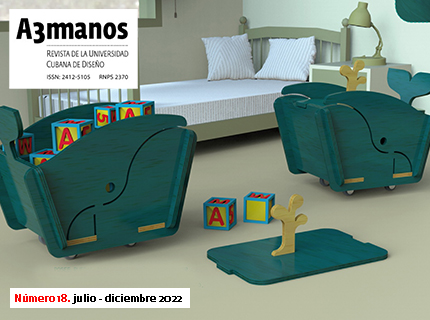Design based on education for sustainable development.
##plugins.themes.bootstrap3.article.main##
Abstract
This article reflects on the importance of promoting the learning of Design based on Sustainable Development Education, since this education enables students to make decisions and adopt responsible measures in favor of the integrity of the environment, the viability of the economy, as well as social justice. All this with the aim of generating its incorporation in a transversal way in the curricular maps of educational institutions, since it is necessary to be aware of current problems, remembering that there is an ecosystemic interdependence between human beings, the environment and thought.
##plugins.themes.bootstrap3.article.details##

This work is licensed under a Creative Commons Attribution-NonCommercial-ShareAlike 4.0 International License.
- Attribution — You must give appropriate credit , provide a link to the license, and indicate if changes were made . You may do so in any reasonable manner, but not in any way that suggests the licensor endorses you or your use.
- NonCommercial — You may not use the material for commercial purposes .
- No additional restrictions — You may not apply legal terms or technological measures that legally restrict others from doing anything the license permits.
- ShareAlike — If you remix, transform, or build upon the material, you must distribute your contribution under the same license as the original. NOTE: This point applies to numbers 1 to 20 of the magazine with the previous CC-BY-NC-SA 4.0 license. Does not apply to the new CC BY-NC 4.0 license from Volume 11, Number. 21 (2024).
References
Brundtland ¿Dónde está nuestro futuro común? (2 de abril de 1987): Recuperado de:
https://www.unitedexplanations.org/2012/04/02/brundtland-donde-esta-nuestro-futuro-
comun/ (Fecha de consulta: 14 de abril de 2022)
Crul, M. y Dielh, J. (2007): Diseño para la sostenibilidad. Un enfoque práctico para
economías en desarrollo. Programa de las Naciones Unidas para el Medio Ambiente.
Universidad Tecnológica de Delft.
Delors, J. (1996): La educación encierra un tesoro. Francia: UNESCO.
Recuperado de: http://unesdoc.unesco.org/images/0010/001095/109590so.pdf#xml=
http://www.unesco.org/ulis/cgi-bin/ulis.pl?database=&set=00575C41F4_0_91&hits_re
c=1&hits_lng=spa (Fecha de consulta 21 marzo 2022)
Mallén, I. Barraza, L y Ceja, M (2009). “La educación para la sustentabilidad: análisis y
perspectiva a partir de la experiencia de dos sistemas de bachillerato en comunidades
rurales mexicana” en Revista El periplo sustentable. México: Universidad Autónoma del
Estado de México.
Máxima Uriarte, J. "Revolución Industrial". Para: Caracteristicas.co. Última edición: 22 de
mayo de 2020. Recuperado de: https://www.caracteristicas.co/revolucion-industrial/.
(Fecha de consulta: 14 de abril de 2022)
Moraes, Maria (2010): “Transdisciplinariedad y educación” en Rizoma Freireano, Vol. 6,
UCB/DF/Brasil. Recuperado de: http://www.rizoma-freireano.org/articles-0606/transdisciplinariedad-y-
educacion-maria-candida-moraes (Fecha de consulta 21 marzo 2022)
Pérez, E; Moya, A; Curcu, A (2013): “Transdisciplinariedad y educación” en Educere,
vol. 17, núm. 56, enero-abril, 2013, pp. 15-26, Mérida, Venezuela: Universidad de los
Andes.
Ponce de León Méndez, H. (2020): “El diseño sustentable y la responsabilidad del
diseñador ante la sociedad” en El impacto de imagen en el arte, la cultura y la sociedad
V. México: Universidad Autónoma del Estado de Morelos.
Victoria, R.; Santamaría, A.; y Rubio, M.A (2013): “Diseño Sustentable, experiencias y
reflexiones sobre su enseñanza” en Revista Iberoamericana para la Investigación y el
Desarrollo Educativo, México: Universidad Autónoma del Estado de México.
UNESCO (2020). Education for sustainable development: a roadmap
Publicado por la Organización de las Naciones Unidas para la Educación, la Ciencia y la
Cultura. París, Francia.
























